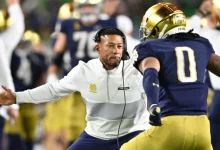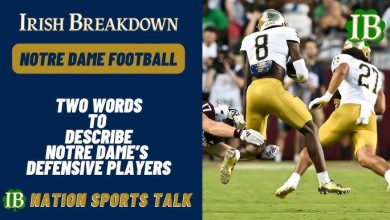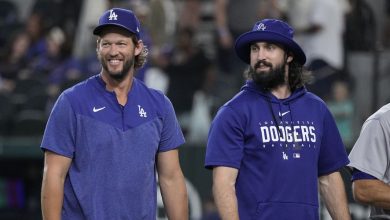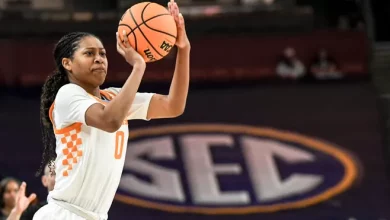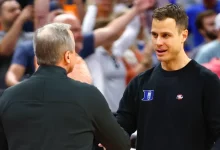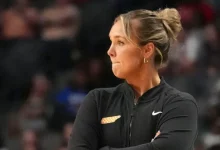Steve Kerr and LeBron James Sound Alarm as NBA’s Escalating Injury Crisis Threatens Star Power, Player Health, and League Integrity
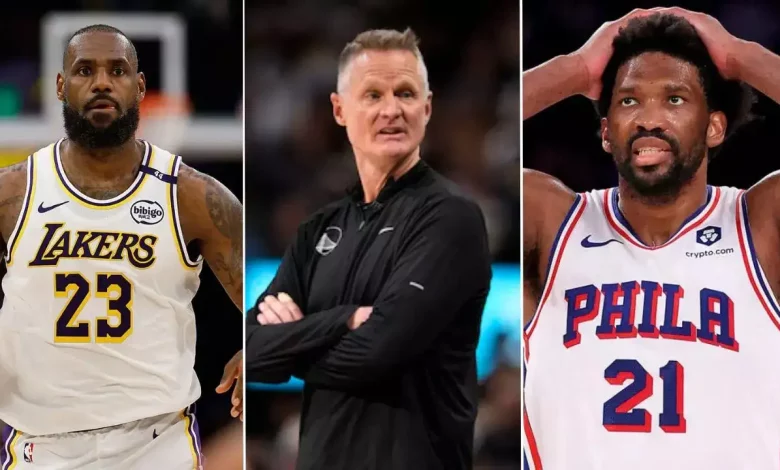
In recent weeks, two of the most respected voices in the NBA—Golden State Warriors head coach Steve Kerr and Los Angeles Lakers superstar LeBron James—have spoken out on an issue gripping the league with increasing urgency: an alarming rise in player injuries. What began as isolated incidents has escalated into what many now view as a full-blown crisis, prompting concern over player workloads, scheduling, and long-term health implications.
As the 2025 season barrels into the final stretch before the playoffs, the absence of marquee talent due to a disturbing spate of injuries has cast a shadow over the league’s product. The voices of Kerr and James—both champions and veterans of NBA wars—have added credibility and urgency to a conversation the league can no longer ignore.
The Breaking Point
The 2025 campaign has seen a laundry list of injuries to star players: Giannis Antetokounmpo with a lingering hamstring issue, Joel Embiid’s re-aggravated knee, Jayson Tatum battling ankle problems, Ja Morant out for the season, and now Devin Booker sidelined with a stress reaction in his foot. This comes in addition to early-season absences by Kawhi Leonard, Zion Williamson, and Jamal Murray—all players essential to their teams’ success and to the league’s global appeal.
“The injuries are out of control,” LeBron James posted on X (formerly Twitter) last week. “We can’t be surprised when guys are falling like this every night. Gotta start having real convos about rest, recovery, and scheduling.”
Steve Kerr, never one to shy away from offering a systemic critique of league issues, echoed James’ sentiments during a postgame press conference.
“This isn’t just bad luck anymore. The product is suffering. The fans are losing, the players are losing, and ultimately the league is losing,” Kerr said. “We have to re-evaluate how we structure the season, how much we play, and how we expect these guys to perform at this level with so little recovery time.”
The Wear and Tear Factor
One of the core issues is the accumulation of fatigue over the course of a long NBA season. With 82 games crammed into just over six months, plus cross-country travel, back-to-back sets, and high-intensity matchups almost every night, the toll on players—particularly those with extensive playoff histories—is undeniable.
Even with advancements in sports science, the league’s grueling schedule is proving incompatible with modern expectations of peak performance and long-term player availability.
“Look at the data,” Kerr explained. “Injuries aren’t just happening to guys in their 30s. We’re seeing 22-year-olds go down with major muscle strains. That’s not just conditioning—that’s overuse.”
LeBron, who has played more minutes than almost any player in NBA history, understands the importance of managing the body.
“We push our bodies to the limit every game,” James said in a recent interview with The Athletic. “And when you combine that with limited rest, summer basketball, and travel, something’s gotta give.”
Rest vs. Ratings
The league is caught in a difficult balancing act. On one hand, national television deals and global streaming demand top players on the court as often as possible. On the other, teams and players are increasingly turning to load management and strategic rest to ensure postseason availability.
The NBA attempted to address this by implementing new player participation policies, fining teams for sitting healthy stars during nationally televised games. But the policy has been met with mixed results. While it’s succeeded in increasing appearances for some, it hasn’t prevented injuries—and may even be contributing to them.
“We’re in this situation where everyone is trying to ‘win the optics’ by playing guys on TV nights,” Kerr said. “But if you want a healthy league, you can’t legislate rest out of the equation.”
Players have echoed that sentiment privately, with several reportedly frustrated by being pressured to play through soreness just to satisfy league guidelines.
Long-Term Health Consequences
The consequences of this injury surge go beyond missing a few games. Repeated soft-tissue injuries, stress reactions, and joint issues at young ages can derail careers and reduce long-term effectiveness. Teams are increasingly investing millions in medical technology, but even the best training staffs can’t offset systemic scheduling concerns.
This is particularly troubling for rising stars like Tyrese Haliburton, who missed multiple stretches this season with nagging lower-body injuries, and Victor Wembanyama, whose massive frame demands careful load monitoring. Both are seen as future faces of the league, and their availability is crucial to maintaining fan interest and team success.
“If the league wants these guys to be the face for 10–15 years, they need to protect them now,” said one anonymous Western Conference executive.
The International Angle
The injury crisis also threatens the NBA’s global growth. With an ever-expanding international fanbase tuning in specifically to see stars like Luka Dončić, Shai Gilgeous-Alexander, and Nikola Jokić, their absence due to injury disrupts engagement and alienates fans.
“It’s heartbreaking,” said a Nigerian fan interviewed on NBA Africa’s platform. “We plan watch parties for these big games and then find out the star we came to see isn’t playing—or worse, he’s out for the season.”
LeBron and Kerr have both emphasized the importance of keeping the league’s biggest names visible not just for fans in the U.S., but for the NBA’s international outreach.
“This is a global league now,” LeBron said. “We can’t grow the game if our best players are always sidelined.”
What Can Be Done?
So what’s the solution? Kerr and James have offered several ideas—some controversial, others pragmatic. Among the options being floated:
-
Reducing the regular season from 82 to 72 games, giving players more rest and fewer back-to-backs.
-
Expanded mid-season breaks beyond All-Star weekend to allow for team-wide recovery.
-
Better enforcement of offseason rest periods, discouraging teams from encouraging players to participate in overseas exhibitions or year-round basketball.
-
Enhanced player insurance and compensation protections for those who miss time due to injury.
-
Revamping the Play-In Tournament format, which adds late-season pressure on bubble teams and can lead to overuse of key players.
“I’m not saying there’s an easy fix,” Kerr said, “but continuing on this path without changes is going to hurt everybody involved—especially the fans.”
LeBron added, “Nobody wants to miss games. But the system doesn’t help us stay healthy. We’ve got to do better.”
League Response
NBA Commissioner Adam Silver has yet to make a public statement addressing the specific comments from Kerr and James, but sources say the league office is aware of the growing outcry. Internal discussions reportedly include data collection on injury patterns, fatigue metrics, and possible adjustments for the 2026 season and beyond.
However, any major change—especially regarding the number of games—would require negotiations with the NBA Players Association, broadcast partners, and team owners. Reducing games might protect players, but it could also cut into revenue, which makes the issue both a health crisis and an economic challenge.
Fan Frustration
Fans have also made their voices heard, particularly on social media, where reactions range from support for player health to frustration over ticket prices for games missing key players.
“I spent $500 for my family to see the Suns, and Booker didn’t play. That’s not fair,” one fan posted on Reddit. “I get injuries happen, but there has to be a better way to protect these guys.”
Others pointed to the toll on competitive balance.
“Teams like the Bucks and Clippers can’t build chemistry when their lineups change every week due to injuries,” wrote one Twitter user. “It ruins the season.”
With two of the most respected figures in basketball—Steve Kerr and LeBron James—calling attention to the NBA’s escalating injury crisis, the league can no longer treat this as background noise. The warning signs have turned into alarms, and the consequences of inaction are becoming clear.
If the NBA wants to maintain the integrity of its competition, the star power of its biggest names, and the loyalty of its global fanbase, it must take decisive action. That begins with listening to the very people who built the league into what it is today—and who are now warning that without change, its future could suffer.
The question now isn’t if the league should respond. It’s how soon and how boldly.


